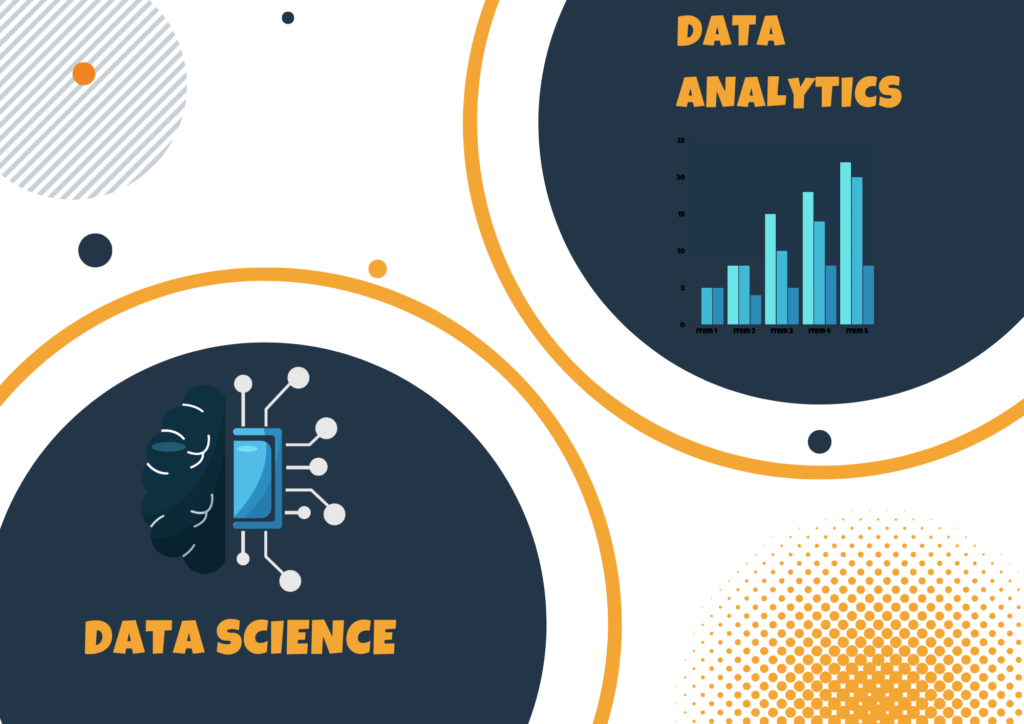
In the rapidly evolving world of technology and information, the terms “data science” and “data analytics” are often used interchangeably. While they share common ground in the realm of data, they are distinct fields with unique roles and purposes.

In this blog, we’ll explore the key differences and similarities between data science and data analytics.
Data science is a multidisciplinary field that combines various techniques from mathematics, statistics, computer science, and domain knowledge to extract valuable insights from data.
Here’s what characterizes data science:
1. Broad Spectrum: Data scientists work with a wide range of data types, from structured data (like spreadsheets) to unstructured data (like text and images).
2. Exploratory Analysis: They perform exploratory data analysis to uncover patterns, trends, and anomalies within the data.
3. Predictive Modeling: Data scientists build and train machine learning models to make predictions and recommendations based on the data.
4. Data Engineering: They’re involved in data collection, cleaning, and preparation to ensure data quality.
5. Deep Learning: In some cases, data scientists delve into deep learning and neural networks for complex tasks like image and speech recognition.
Data analytics, on the other hand, focuses on examining data to draw conclusions and inform decision-making.
Here’s what characterizes data analytics:
1. Narrower Focus: Data analysts typically work with structured data and concentrate on specific questions or tasks.
2. Descriptive Analysis: They perform descriptive analysis to summarize and visualize data, often using tools like Excel or BI (Business Intelligence) software.
3. Reporting: Data analysts create reports and dashboards to present insights and support business decisions.
4. Historical Perspective: Their analysis is primarily focused on historical data, identifying trends and providing insights based on past information.
The primary distinction between data science and data analytics lies in their scope and purpose. Data science is more comprehensive, encompassing various data-driven tasks, from data collection and cleaning to advanced machine learning.
Data analytics, on the other hand, is centered around examining data to provide actionable insights for decision-making.
However, it’s essential to acknowledge that there’s an overlap between these fields. For example, both data scientists and data analysts may use statistical techniques, and both may work with data visualization tools to present their findings effectively.
In the end, data science and data analytics are not opposing forces but rather complementary disciplines. They play distinct yet interconnected roles in the data-driven world. Data analytics provides the foundation for informed decision-making, while data science delves deeper into data, extracting valuable insights and building predictive models.
Whether you’re pursuing a career in data science or data analytics, the key is to understand the nuances of each field and choose the one that aligns with your interests and career goals. Both fields are in high demand and offer exciting opportunities in the era of big data and analytics.
Click below to chat with us over WhatsApp